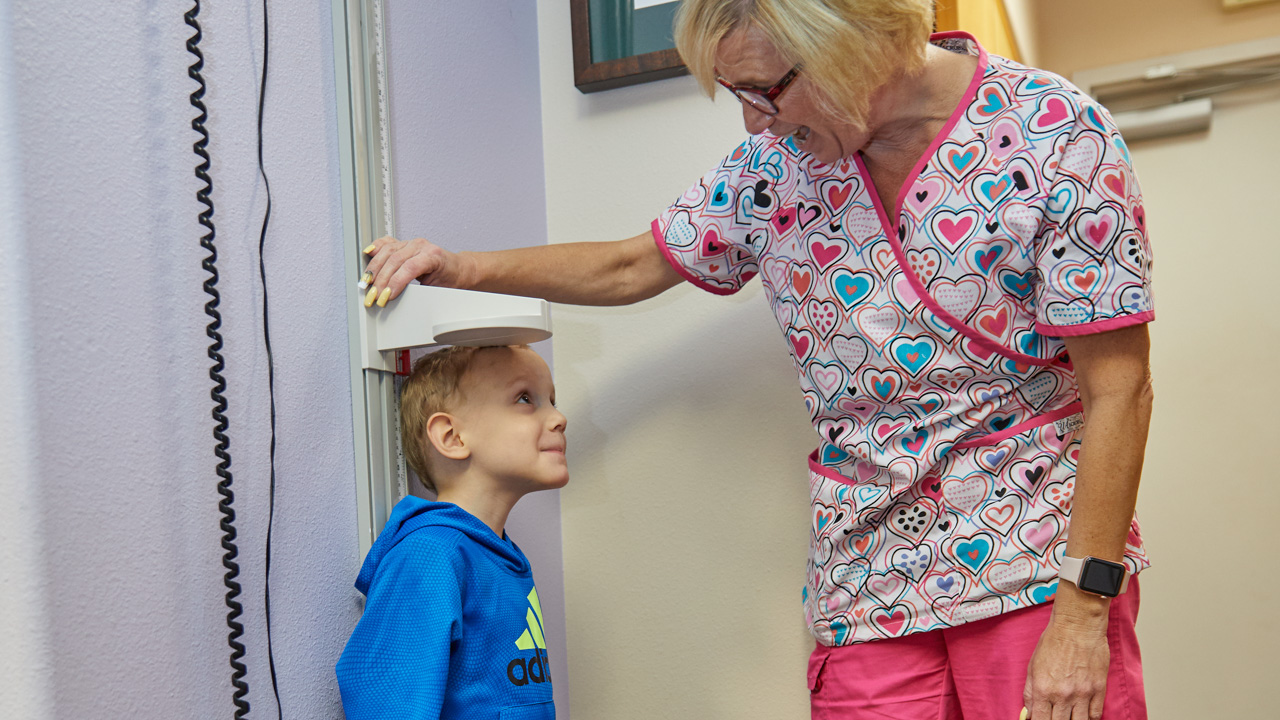
Growth and development
Children grow and change quickly. At Eugene Pediatric Associates, we track the physical growth and development of your child closely – we enjoy watching them grow as much as parents do! In fact, Eugene Pediatrics was recognized by the Oregon Health Authority in 2017 as the top primary care clinic in the entire state of Oregon for screening its infants and toddlers for development.
Our goal is to help you understand how your child is measured and how she is doing compared to other infants or children her age.
As a parent, you should also be aware of common milestones, which will help you understand and gauge your child’s development. If you are worried about your child’s physical growth or development, please talk with us about your concerns.
Physical growth
Physical growth in babies is measured in weight, length and head circumference (measurement around the largest part of the skull). Children over the age of 2 are measured by weight, height and body mass index (assesses weight for height). Early detection of improper growth patterns plays a critical part in addressing potentially important health issues in children.
Growth charts
Using the measurements taken during well checks, you can determine where your child falls on standard weight/height/head-size growth curves. In order to plot your child on a curve download the growth chart with the correct gender and age of your child.
Look for your child’s age along the bottom of the chart. Then move your finger upward until you hit the correct weight/height/head size, listed to the left. The curve closest to the point will show your child’s approximate percentile, as compared to other children her age.
Example: If your 1-year-old girl is 72 cm long, find the 0-36 month curve for girls. Look for “1 year” along the bottom of the graph, and go up until your pencil is lined up with the 72 cm line. You will see that point sits on the 25th percentile for height. In other words, she is taller than 25 percent of girls her age, and shorter than 75 percent of girls her age.
Remember, it’s not the percentile line that counts, as much as whether your child is consistently following the curve. If a child has always been petite, and remains at the 10th percentile for weight, it’s likely due to her body type.
On the other hand, a baby who is consistently around the 90th percentile then falls to the 10th percentile may be experiencing a significant medical problem.
Development
We divide a child’s development into five main categories:
- Big body movements (gross motor skills)
- Hand movements (fine motor skills)
- Communication
- Personal/social skills
- Problem solving
Every child has a unique skill set and develops at different rates. Parents should not conclude that their child is developmentally delayed if she has yet to master the milestones suggested for her age. And it is not unusual for babies to focus on one area of development at a time. If you have concerns, please schedule an appointment for a full examination.
